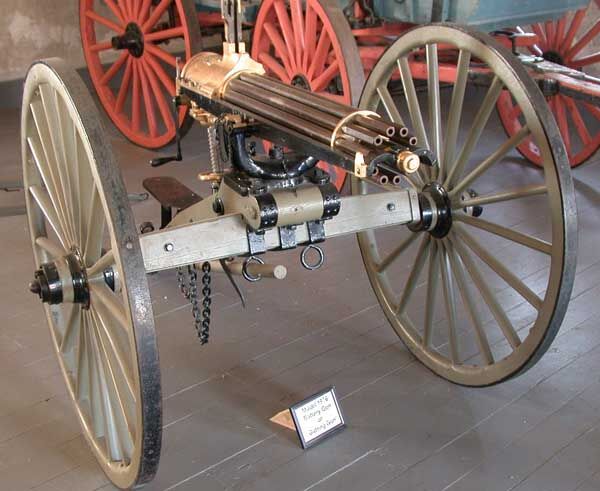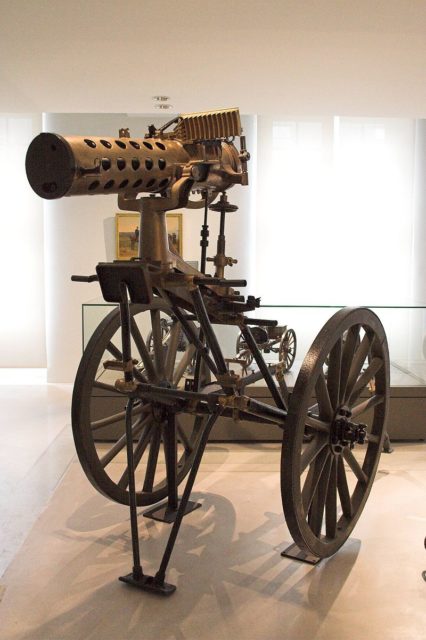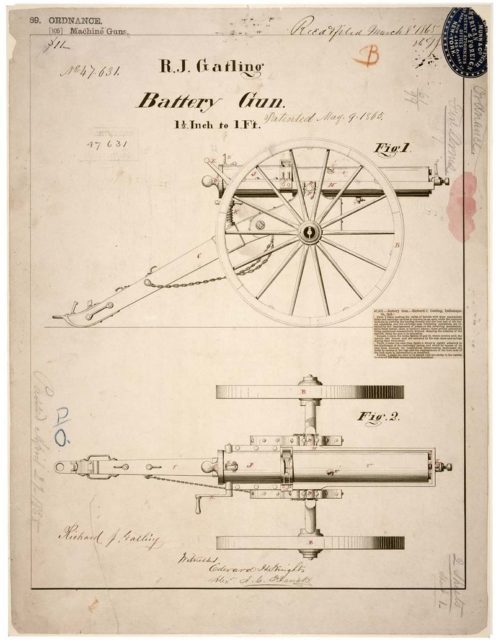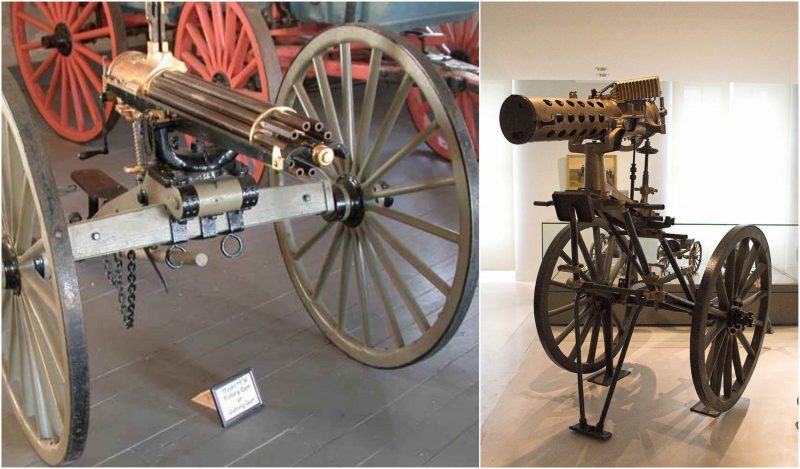The Gatling gun is one of the best-known early rapid-fire spring loaded, hand cranked weapons, and a forerunner of the modern machine gun. The Gatling gun was designed by the American inventor Dr. Richard J. Gatling in 1861 and patented on November 4, 1862. Gatling wrote that he created it to reduce the size of armies and so reduce the number of deaths by combat and disease, and to show how futile war is.
Although the first Gatling gun was capable of firing continuously, it required a person to crank it; therefore it was not a true automatic weapon. The Maxim gun, invented and patented in 1883, was the first true fully automatic weapon, making use of the fired projectile’s recoil force to reload the weapon. Nonetheless, the Gatling gun represented a huge leap in firearm technology.

Prior to the Gatling gun, the only weapons available to military forces, capable of firing many projectiles in a short space of time, were mass-firing volley weapons like the French Reffyemitrailleuse in 1870–1871, and field cannons firing canister shot, much like a very large shotgun. The latter were widely used during and after the Napoleonic Wars. Although the maximum rate of fire was increased by firing multiple projectiles simultaneously, these weapons still needed to be reloaded after each discharge, which for multi-barrel systems like the mitrailleuse was cumbersome and time-consuming. This negated much of the advantage of their high rate of fire per discharge, making them much less powerful on the battlefield. In comparison, the Gatling gun offered a rapid and continuous rate of fire without having to be manually reloaded by opening the breech.
The original Gatling gun was a field weapon which used multiple rotating barrels turned by a hand crank, and firing loose (no links or belt) metal cartridge ammunition using a gravity feed system from a hopper. The Gatling gun’s innovation lay in the use of multiple barrels to limit overheating, a rotating mechanism, and a gravity-feed reloading system, which allowed unskilled operators to achieve a relatively high rate of fire of 200 rounds per minute.
The US Army adopted Gatling guns in several calibers, including .42 caliber, .45-70, .50 caliber, 1 inch, and (M1893 and later) .30 Army, with conversions of M1900 weapons to .30-03 and.30-06. The .45-70 weapon was also mounted on some US Navy ships of the 1880s and 1890s.

The Gatling gun was first used in warfare during the American Civil War. Twelve of the guns were purchased personally by Union commanders and used in the trenches during the siege of Petersburg, Virginia (June 1864 – April 1865). Eight other Gatling guns were fitted on gunboats. The gun was not accepted by the American Army until 1866, but a sales representative of the manufacturing company demonstrated it in combat.
In this period, specifically July 17, 1863, Gatling guns were used to over-awe New York anti-draft rioters. Two were brought by a National Guard unit from Philadelphia to use against strikers in Pittsburgh.
Gatling guns were famously not used at the Battle of the Little Bighorn, also known as “Custer’s Last Stand”, when Gen. George Armstrong Custer chose not to bring Gatlings with his main force.
Captain Germán Astete of the Peruvian Navy took with him dozens of Gatling guns from the United States to Peru in December 1879 during the Peru-Chile War of the Pacific. Gatling guns were used by the Peruvian Navy and Army, especially in the Battle of Tacna (May 1880) and the Battle of San Juan (January 1881) against the invading Chilean Army.

Lieutenant A.L. Howard of the Connecticut National Guard had an interest in the company manufacturing Gatling guns, and took a personally owned Gatling gun to Saskatchewan, Canada, in 1885 for use with the Canadian military against Métis rebels during Louis Riel’s North-West Rebellion.
